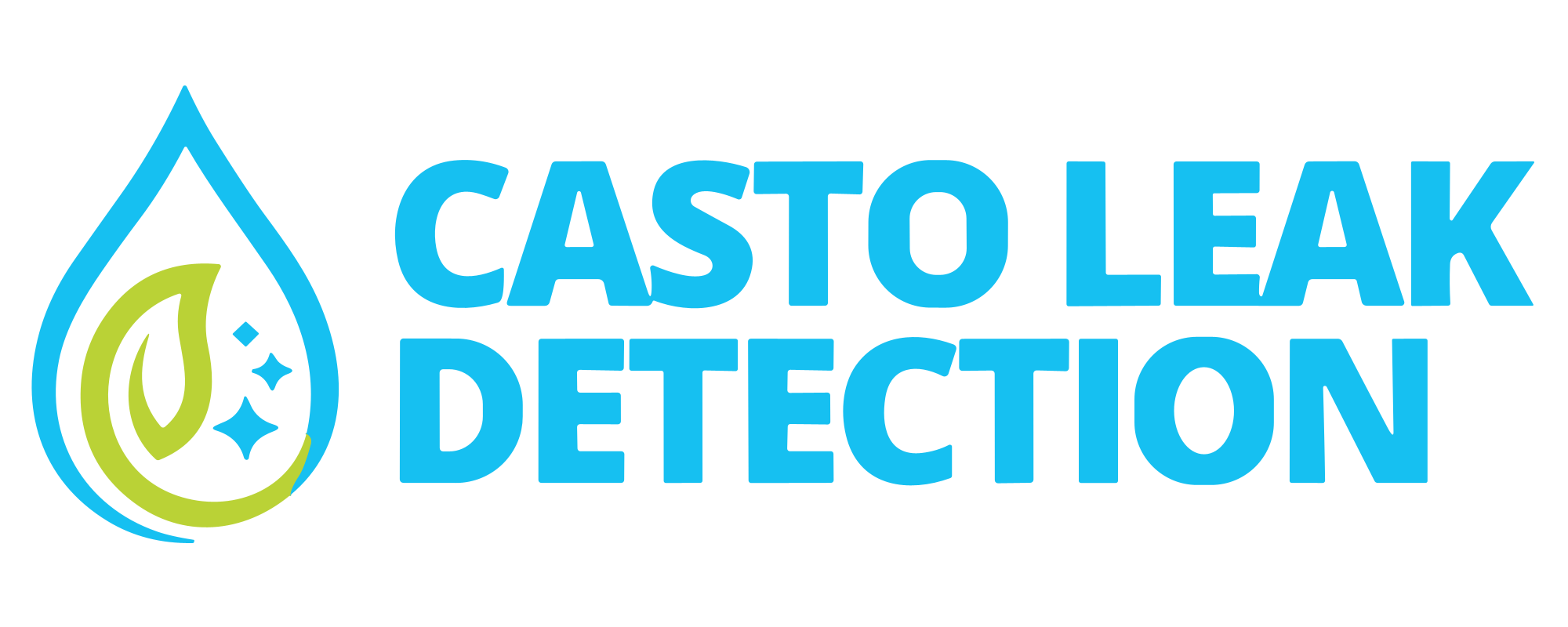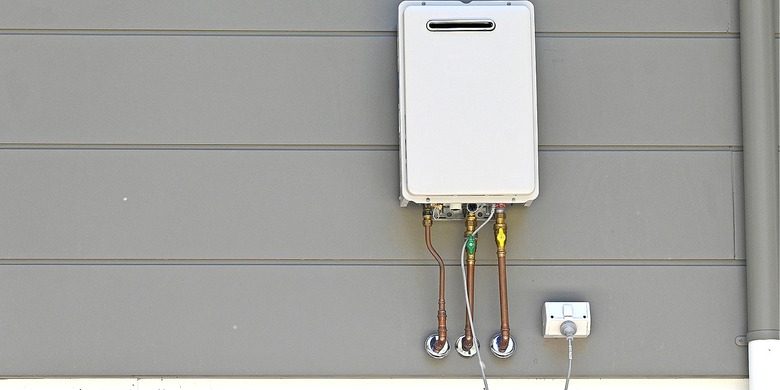Installing an outdoor tankless water heater can significantly enhance your home’s hot water system, providing numerous benefits such as space savings, improved safety, and greater energy efficiency. This guide will walk you through everything you need to know about outdoor tankless water heater installation, from understanding the technology to detailed installation steps, maintenance tips, and cost considerations.
Understanding Outdoor Tankless Water Heaters
What is a Tankless Water Heater?
A tankless water heater, also known as an on-demand water heater, heats water only when needed, eliminating the need for a storage tank. Unlike traditional water heaters that constantly heat and store water, tankless systems provide hot water instantly by running cold water through a heated coil. This results in endless hot water supply and energy savings.
Advantages of Outdoor Installation
Outdoor installation of tankless water heaters offers several benefits. Firstly, it saves indoor space, making it ideal for smaller homes or those with limited storage. Secondly, outdoor units improve safety by eliminating the risk of gas leaks and reducing the need for extensive venting systems. Lastly, placing the heater outside can enhance the home’s aesthetic appeal by keeping equipment out of sight.
Popular Brands and Models
Several reputable brands offer high-quality outdoor tankless water heaters. Popular models include the Rinnai RUR199iN, Noritz NRC66DVNG, and the Rheem RTGH-95DVLN. These models are known for their efficiency, reliability, and advanced features such as Wi-Fi connectivity and recirculation technology. Comparing performance, price, and user reviews can help you select the best model for your needs.
Preparing for Installation
Assessing Your Home’s Needs
Before starting the installation process, assess your home’s hot water needs. Calculate the total hot water demand by considering the number of bathrooms, kitchen usage, and laundry needs. Choosing the right size and capacity is crucial for ensuring adequate hot water supply. Additionally, consider the climate and weather conditions in your area, as extreme temperatures can impact the heater’s efficiency.
Required Tools and Materials
Gathering the necessary tools and materials beforehand can streamline the installation process. Essential tools include a drill, adjustable wrenches, pipe cutter, and a level. You’ll also need materials such as pipe fittings, gas and water lines, mounting brackets, and safety equipment like gloves and goggles. Having everything ready will help avoid delays and ensure a smooth installation.
Permits and Regulations
Understanding local building codes and obtaining the necessary permits is a crucial step in the installation process. Different regions have specific requirements for gas line installation, ventilation, and water heater placement. Ensure compliance with all safety standards to avoid legal issues and ensure the safe operation of your water heater.
Installation Process Overview
Site Selection and Preparation
Choosing the right location for your outdoor tankless water heater is vital. The site should be easily accessible for maintenance and repairs, well-ventilated, and protected from extreme weather conditions. Prepare the installation site by clearing debris, ensuring a solid mounting surface, and checking for proper drainage.
Mounting the Unit
Securely mounting the unit is essential for stability and longevity. Follow the manufacturer’s instructions for mounting on different surfaces, such as brick, stucco, or wood. Use appropriate anchors and brackets to ensure the unit is stable and level. Position the heater at a height that allows easy access to controls and maintenance points.
Connecting Water and Gas Lines
Properly connecting the water and gas lines is crucial for safe and efficient operation. Start by turning off the main gas and water supply. Connect the cold water inlet and hot water outlet using appropriate fittings. Install a sediment trap on the gas line to prevent debris from entering the heater. Check for leaks and ensure all connections are secure.
Electrical and Ventilation Setup
Electrical Connections
Running electrical wiring to the unit is necessary for powering the ignition system and any electronic controls. Connect the wiring according to the manufacturer’s instructions, ensuring the use of appropriate wire gauges and circuit protection. Safety checks, such as testing the voltage and grounding the unit, are essential to prevent electrical hazards.
Ventilation Requirements
Proper ventilation is crucial for outdoor tankless water heaters to prevent the buildup of exhaust gases. Depending on the model, you may need to install a venting system that directs exhaust away from the home. Options include horizontal or vertical venting, and materials such as stainless steel or PVC. Ensure the venting system meets local codes and manufacturer specifications.
Insulating Pipes and Wiring
Insulating the pipes and wiring helps protect against freezing and improves energy efficiency. Use foam pipe insulation to cover all exposed water lines, and secure it with tape or clamps. For electrical wiring, use weather-resistant conduit to protect against moisture and physical damage. Proper insulation ensures reliable operation, especially in colder climates.
Testing and Troubleshooting
Initial System Check
After installation, perform an initial system check to ensure everything is functioning correctly. Turn on the gas and water supply, and ignite the unit following the manufacturer’s instructions. Check for proper water flow, temperature consistency, and any unusual noises. Adjust the settings as needed to achieve the desired performance.
Common Issues and Solutions
Common issues with tankless water heaters include low water pressure, irregular water temperature, and error codes. Low water pressure can often be resolved by cleaning the inlet filter or descaling the unit. Irregular temperatures may indicate a problem with the flow sensor or heating elements. Refer to the troubleshooting guide in the user manual for specific error codes and solutions.
When to Call a Professional
While many installation and maintenance tasks can be handled by homeowners, some issues require professional expertise. Complex problems like gas leaks, electrical faults, or persistent error codes should be addressed by a qualified technician. Additionally, professional service is often required to maintain the warranty and ensure safe operation.
Maintenance and Care
Regular Maintenance Tasks
Regular maintenance is essential for the longevity and efficiency of your tankless water heater. Routine tasks include flushing the system to remove mineral buildup, cleaning the air intake filter, and inspecting the venting system. Regular checks for wear and tear, such as leaks or corrosion, can prevent major issues and extend the unit’s lifespan.
Seasonal Maintenance
Seasonal maintenance helps ensure reliable performance year-round. In colder climates, prepare for winter by insulating exposed pipes and ensuring the unit is protected from freezing temperatures. For warmer seasons, check for any signs of wear or damage caused by weather exposure. Adjusting the maintenance routine based on seasonal needs keeps the heater running efficiently.
Long-Term Care and Replacement
Over time, even well-maintained tankless water heaters will need replacement. Signs that it’s time to replace the unit include frequent repairs, declining efficiency, and the heater reaching its expected lifespan. Upgrading to newer models with advanced features can improve performance and energy savings. Regular maintenance and timely replacements ensure continuous hot water supply.
Cost Considerations
Initial Installation Costs
The initial cost of installing an outdoor tankless water heater includes the price of the unit, materials, and labor. On average, the total cost can range from $1,500 to $3,000, depending on the complexity of the installation and the heater model. Compared this to traditional water heaters, tankless systems may have higher upfront costs but offer long-term savings.
Operating Costs
Tankless water heaters are known for their energy efficiency, which translates to lower monthly operating costs. These heaters only use energy when hot water is needed, reducing standby energy loss. Factors affecting operating costs include the heater’s efficiency rating, local utility rates, and household water usage. On average, homeowners can save up to 30% on energy bills with a tankless system.
Financing and Incentives
Various financing options are available to help manage the cost of installation. Home improvement loans, manufacturer financing, and credit options can spread the expense over time. Additionally, government rebates and incentives for energy-efficient appliances can reduce the upfront cost. Researching available programs and applying for rebates can make tankless water heaters more affordable.
Environmental Impact
Energy Efficiency
Tankless water heaters are highly energy-efficient, reducing overall energy consumption. Unlike traditional heaters that constantly maintain water temperature, tankless systems heat water on demand, minimizing energy waste. This efficiency reduces greenhouse gas emissions and supports sustainable living.
Reducing Carbon Footprint
By using less energy, tankless water heaters contribute to a lower carbon footprint. The reduced demand for fossil fuels and lower emissions help combat climate change. Additionally, many tankless models are designed with eco-friendly features such as low-NOx burners, further minimizing environmental impact.
Eco-Friendly Features
Many modern tankless water heaters incorporate eco-friendly features. Water-saving technologies, such as flow control and efficient heating elements, reduce water and energy waste. Some units are made with recyclable materials and components, promoting sustainability. Innovations in green technology continue to improve the environmental benefits of tankless systems.
FAQs About Outdoor Tankless Water Heater Installation
What are the benefits of an outdoor installation?
- Space and safety advantages: Outdoor units free up indoor space and eliminate the risk of indoor gas leaks.
- Aesthetic benefits: Keeps equipment out of sight, maintaining a clean indoor appearance.
- Installation flexibility: Easier to install and maintain with direct access to gas and water lines.
How do I choose the right size heater?
- Calculating hot water needs: Consider the number of bathrooms, kitchen usage, and laundry needs.
- Matching capacity to household size: Ensure the heater can handle peak demand.
- Considering future needs: Plan for potential household growth or increased usage.
Can I install a tankless water heater myself?
- DIY vs. professional installation: While some tasks can be DIY, professional installation ensures safety and compliance.
- Required skills and tools: Installation involves plumbing, gas, and electrical work, requiring specific skills and tools.
- Safety considerations: Proper installation is critical to prevent leaks, fire hazards, and electrical issues.
How long does the installation process take?
- Average installation timeline: Typically 4-8 hours, depending on complexity.
- Factors that affect duration: Site preparation, complexity of connections, and inspections.
- Tips for a smooth installation: Prepare the site, gather all materials, and follow manufacturer guidelines.
What maintenance is required for tankless water heaters?
- Routine maintenance tasks: Flushing the system, cleaning filters, and inspecting connections.
- Seasonal care tips: Insulate pipes for winter, check for weather damage in summer.
- Signs of potential issues: Look for leaks, temperature fluctuations, and error codes.
Are there any specific regulations for outdoor installation?
- Understanding local codes: Research local building codes and regulations.
- Common regulatory requirements: Gas line installation, venting, and water heater placement.
- Ensuring compliance: Obtain necessary permits and follow safety standards.
What are the costs associated with tankless water heaters?
- Initial and ongoing costs: Includes purchase, installation, and maintenance expenses.
- Compared with traditional heaters: Higher upfront cost but lower long-term expenses.
- Cost-saving tips: Utilize rebates, financing options, and energy-saving practices.
How can I improve the efficiency of my tankless water heater?
- Best practices for energy savings: Regular maintenance, proper insulation, and efficient usage.
- Upgrading components: Consider high-efficiency models and advanced features.
- Regular maintenance tips: Routine checks and timely repairs to maintain performance.
What should I do if I encounter a problem with my heater?
- Troubleshooting common issues: Refer to the user manual and check for error codes.
- When to seek professional help: Persistent issues or complex problems require expert assistance.
- Warranty and service options: Utilize manufacturer warranties and service plans for repairs.
What are the environmental benefits of tankless water heaters?
- Energy and water savings: Efficient heating reduces energy consumption and water waste.
- Reduced emissions: Lower greenhouse gas emissions compared to traditional heaters.
- Sustainable technology features: Eco-friendly designs and recyclable materials.
Conclusion
Outdoor tankless water heater installation offers numerous benefits, including space savings, energy efficiency, and improved safety. By following the proper installation steps, performing regular maintenance, and understanding cost considerations, you can enjoy reliable hot water while contributing to environmental sustainability. Investing in a tankless water heater is a smart choice for modern, eco-conscious homeowners.




